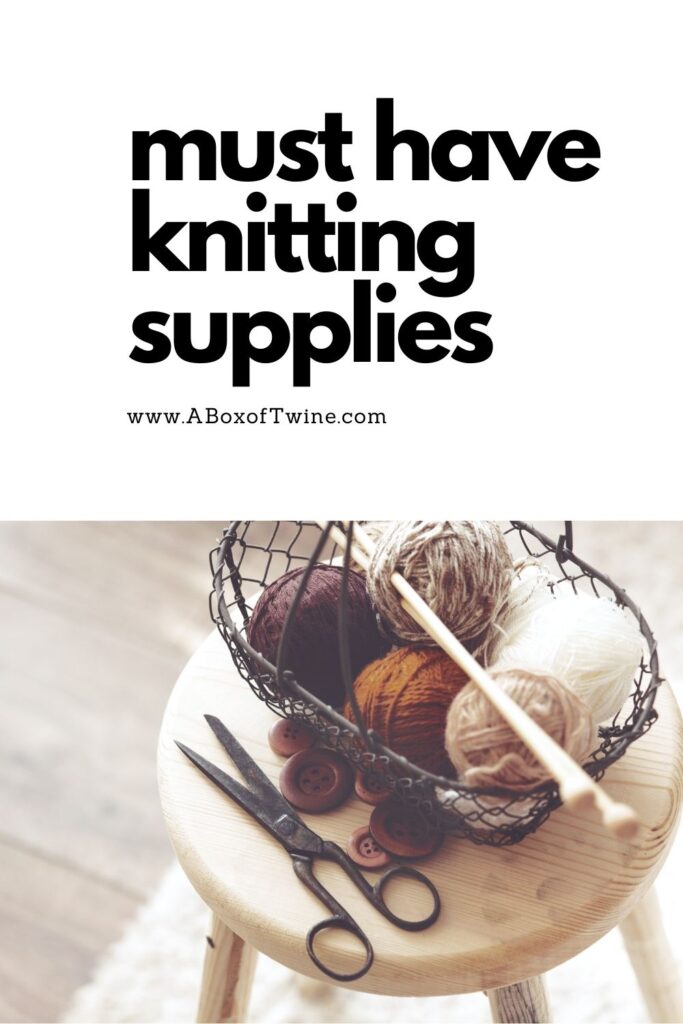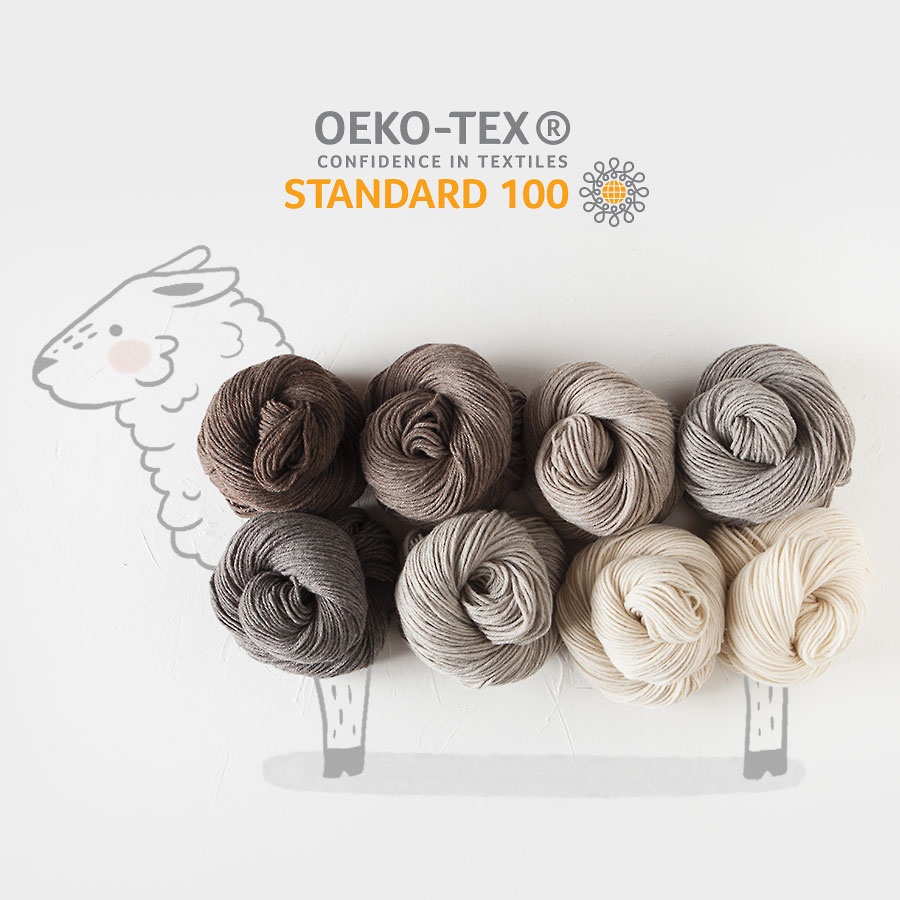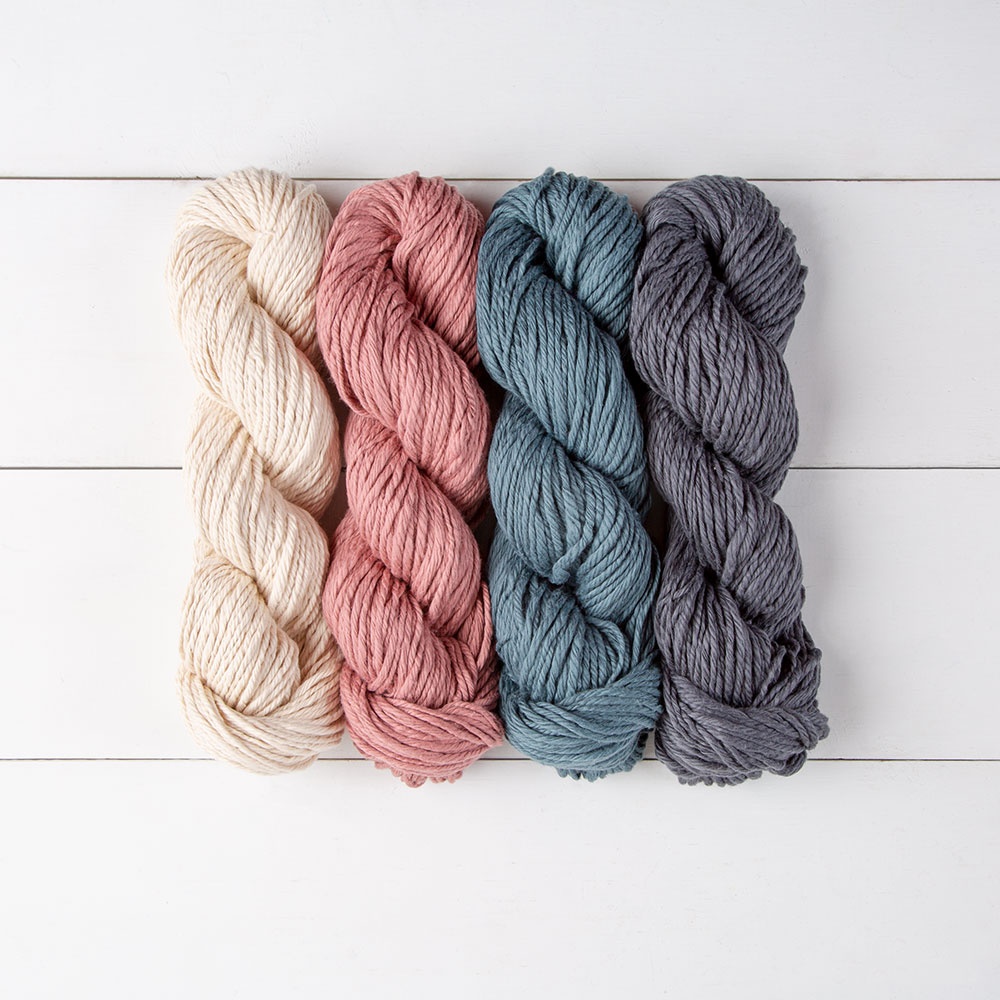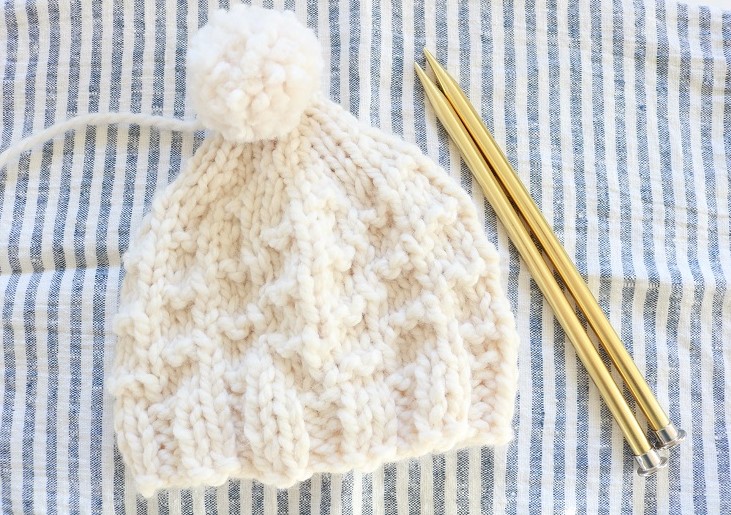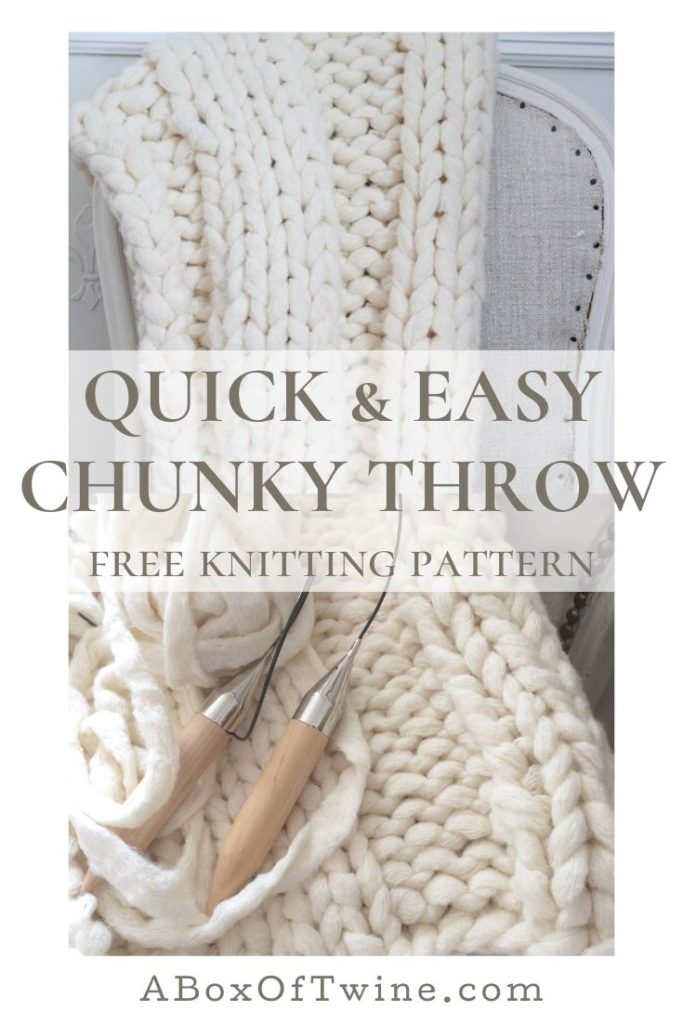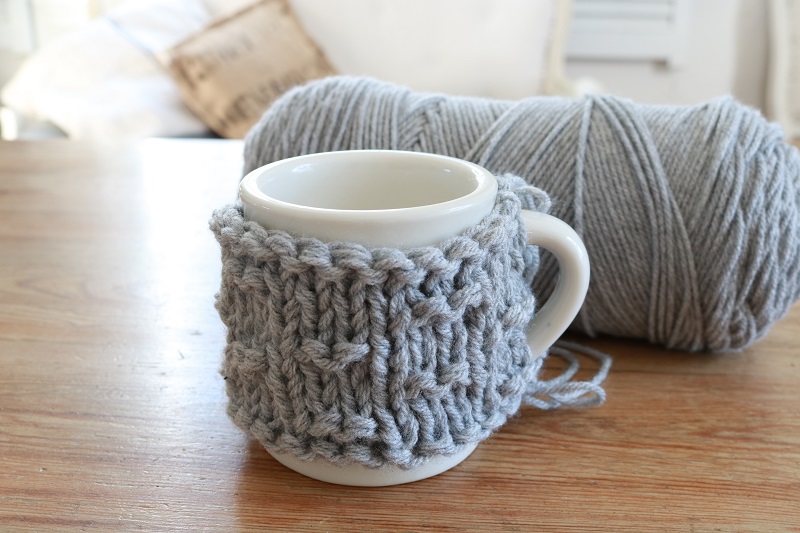
21 Supplies Every Knitter Needs
I love sharing simple knitting patterns here on the blog, especially when they are geared toward beginner knitters. My knitting skills vary between beginner and intermediate, so I can appreciate the long, and sometimes challenging, journey to advance in knitting. I also appreciate basic knitting supplies that help make a knitting project easier. Today I’ve gathered a list of 21 knitting essentials that will help start you on your own knitting adventure!
If you are familiar with this blog, you know I stick to a neutral, classic style with farmhouse & Scandinavian influence. My knitting suggestions will be geared toward that style, whether for the home or wardrobe. I hope you enjoy those styles, too.
This post may contain affiliate links. That means if you click and buy, I may make a commission at no cost to you. Please see my full disclosure policy for more details.
Let’s get started… what supplies do you need for knitting? What do you put in a beginner knitting kit? My list of top 21 knitting supplies for beginners will get you on your way. You can also grab a free checklist of these knitting supplies as part of my KNITTING SUPPLIES CHEATSHEETS freebie…
Best Knitting Tools and Materials
What supplies are needed for knitting?
Before I begin my list, I want to state that if you are a beginner, start small. You won’t need everything on this list quite yet, but it’s a good idea to educate yourself on what these knitting supplies are used for. You may want to grab something extra that you know you will need right away, but it’s fine to just begin with a few basics.
Yarn
Various size yarns
Hands down, the first supply most knitters think of is YARN! Oftentimes yarn can be the inspiration for a specific knitting project, based on its’ color and texture. The only challenge is that there are so many yarns to choose from. Where do you start?
The first thing you may want to choose is the SIZE OF THE YARN. Bulky yarns (size 5 and up) are terrific for projects where you want a bulky look, such as blankets, pillows, or chunky accessories to wear. Medium weight (aka worsted weight, size 4) yarn is the most common size for knitting projects, along with DK or sport weight yarn. Yarns that are sized 3 or smaller are generally used for projects that are best with smaller stitches and softer drape, such as baby clothing, lace pieces, socks, and little ornaments.
It is important to use the correct weight yarn indicated in a particular knitting pattern, as it will affect the size of your resulting project. Bulky or Medium weight yarn sizes are probably best for a beginner knitter, as you get used to working with the yarn on needles.
Here are suggestions for lovely yarns:
Be sure to also check out my lists of BEST WINTER YARNS, BEST FALL YARNS and BEST SUMMER YARNS, too. You can always find yarn in MY FAVORITES shopping section as well.
Yarn storage
Where will you store all your yarn? It’s a good idea to have a dedicated space to store the yarn you own. This will ensure you can take care of it properly. Never store yarn in an attic, basement, or garage, as the fluctuations in temperature may ruin it. Keep it indoors and dry.
One of my favorite ways to store yarn is on open shelving, or in baskets. Tote bags are also terrific for storing yarn and projects on-the-go. Peek at my FARMHOUSE STYLE TOTE BAGS or SHEEP YARN JUTE BAGS if you’re looking for a cute bag idea.
Check out these other storage options for your yarn and essentials:
Yarn bowl
Yarn can often be difficult to manage when it unwinds from a skein or ball. It’s frustrating to have yarn get tangled when you are in the middle of knitting some stitches (or your cat wants to play with it). YARN BOWLS allow for a resting spot for the skein, and they have a slit where the working yarn can neatly flow. This is definitely a ‘nice-to-have’ supply, versus an essential.

Yarn labels
You may want to keep track of the information for each skein/ball of yarn you purchase. This helps remind you of the size, weight, yardage, material, and washing instructions for that yarn. Sometimes I pin the original package label (with that information) to my yarn skein, but another idea is to make your own labels.
Knitting Needles
What knitting needles should I buy?
Of course, knitting isn’t knitting without needles! There are three types of knitting needles you can use, but most beginners will start with straight needles. These needles are a must-have on your knitting supplies list.
Straight needles
STRAIGHT NEEDLES are just that – straight! One end of the straight needle is closed (with a little knob) and the other end is pointy. They are used in pairs for working a piece in a back-and-forth manner for each row. Straight needles come in various diameters, which differentiates their ‘size’. They can also come in various lengths, which allows them to hold more stitches for a row. Popular size knitting needles are Sizes 7, 8, 9, and 10. These needles can be worked with the most common size yarn – Medium weight (4). The bigger the needle size, the bigger the yarn you will most likely be working with. Conversely, the smaller the needle size, the smaller the yarn size.
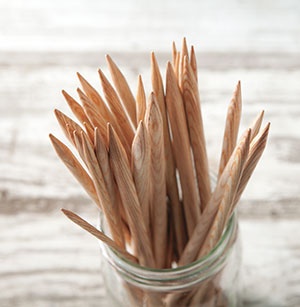
Straight needles are what a beginner should start with, then advance to these next type of needles…
Circular needles
CIRCULAR NEEDLES allow you to work a piece ‘in the round’, basically in a circle that is joined. They are also handy if you have a straight ‘back-and-forth’ piece with many stitches in a row, so that the circular needle can hold much of your work. Circular needles also come in various diameters, as well as various lengths. It is a great idea to have a variety of lengths for one needle size, considering you may need them for a rounded hat (shorter length) or a large sweater (longer length).
Double pointed needles
DOUBLE POINTED NEEDLES (dpn) are similar to straight needles, except that they have points at both ends. Like circular needles, they allow you to work a piece ‘in the round’, basically in a circle that is joined. Normally they are used when a circular needle would be too long and cumbersome, such as at the top of a hat or for socks. These projects require less stitches, especially when the piece gets smaller, but need to be worked in a circle. It is often common to hold your circular stitches spread evenly on 3 dpn’s, then work the stitches with two of the needles at a time.
(Learn more about KNITTING NEEDLE SIZES HERE)
Miscellaneous Knitting Tools
What should a beginner knitter buy?
Once you have the most important knitting essentials acquired (needles and yarn), you can proceed to collect miscellaneous tools. Below is a beginner-friendly list of knitting supplies that are great to have on hand.
Essential Knitting Tools
- SCISSORS – it is a good idea to have both fabric shears and small embroidery scissors on hand. Sharp FABRIC SHEARS will ensure smooth cutting of your thicker yarns, while EMBROIDERY SCISSORS are useful to snip threads from thinner yarns.
- TAPESTRY NEEDLES – Also known as darning needles, it is necessary to have blunt-edged TAPESTRY NEEDLES on hand to weave in loose yarn ends when your project is finished.
- TAPE MEASURE – Knitting will always require measuring, especially if you are dealing with wearables. Tape measures are useful for measuring your gauge sample (practice knitted piece), as well as keeping track of your piece as you knit. FABRIC TAPE MEASURES are flexible and lightweight, which makes them perfect for measuring knitted pieces.
- GAUGE SWATCH RULER – speaking of gauge, a GAUGE SWATCH RULER is a handy little tool to figure out how many stitches and rows you have in a (typical) 4” sample square. Although these are not necessary, they are very helpful.
- NEEDLE STORAGE – it’s a great idea to organize your knitting needles in a practical NEEDLE STORAGE CONTAINER so that you don’t lose any. It’s no fun to try to start a project and realize you can only find one size 7 needle!
Essential Knitting Tools for Later
The next items on the knitting supplies list are not necessary for your beginner knitting journey, but will be great to own in the future. Some will help as you progress to more complicated patterns, such as cable stitch patterns.
- STITCH MARKERS and STITCH HOLDERS – Patterns may instruct you to place a STITCH MARKER on your needles as you work a piece. This helps keep track of a specific spot in your work where a stitch pattern begins or ends. They are especially helpful when keeping track of each ‘round’ in a circular piece. STITCH HOLDERS are a little different in that they are used to hold a number of stitches off of your knitting needles for a period of time. You move a set of stitches to these holders temporarily, then work them later as instructed by the pattern. They can be giant safety pins or you could just use scrap yarn to hold the stitches on.
- CABLE NEEDLES – these small bent double-pointed needles are very useful when your pattern calls for cable stitches. Cable stitch patterns require you to place a certain number of stitches on a ‘holding’ needle either behind or in front of your work. Next the pattern instructs you to knit or purl stitches from your left-hand needle prior to working the stitches on this ‘holding’ needle. CABLE NEEDLES are essentially used for the ‘holding needle’.
- NEEDLE POINT PROTECTORS – NEEDLE POINT PROTECTORS, aka needle caps, are handy when you must stop your knitting work abruptly or you bring your work on-the-go. They cover the pointed ends of your needles so that the stitches won’t slip off. Genius!
- ROW COUNTER – this is a neat little tool to keep track of how many rows you have already worked in a pattern. I usually jot down my row count as tally groups of five on paper, but I can see how ROW COUNTERS would be helpful.
Non-Essential Knitting Tools
- POM POM MAKER or TASSEL MAKER – knitting projects may call for embellishments such as pom poms or tassels. Those are favorites of mine that I love to add to my patterns. I own THIS POM POM MAKER, but usually MAKE MY OWN TASSELS. I can see how having a TASSEL MAKER would also help.
- BLOCKING MAT – when a knitted project needs to be blocked to form its’ final shape, it is useful to have a BLOCKING MAT for this purpose. The knitted piece is pinned to the blocking mat so that its’ shape is held in place. If you don’t own a mat, a thick towel will also do the trick!
- STRAIGHT PINS – STRAIGHT PINS are often used to block knitted pieces when they are finished. Blocking helps shape your piece into the desired fit/result.
- PATTERN BINDER – if you are keen on organizing and keeping track of all your knitting projects, you may want to own a binder to store your loose printed knitting patterns. Check out my KNIT AND CROCHET PROJECTS PLANNER for help with finding and scheduling time for knitting:
Knitting Essentials – Patterns
Now that you have an idea of beginner-friendly knitting essentials to have on hand, you can seek out simple knitting patterns to start creating. Simple patterns are top on the list of knitting must haves for beginners. Get a hang of the knit and purl stitches, and you can find a wealth of patterns that use only these two stitches!
There are an abundance of simple knitting patterns and tutorials online that will get your creative juices flowing. I also have recommendations of FAVORITE KNITTING BOOKS that will provide endless inspiration.
Peek at the KNITTING category on my blog for simple project ideas, like these. (They just use Knit and Purl stitches):
You can find several beginner-friendly knitting patterns in my ETSY SHOP, too.
——————————————————————————————————————–
Do you wish you could really learn how to knit beautiful things?
Click here to master basic knitting skills in under 2 weeks – even if you are a complete beginner, intimidated by mistakes, and lack design coordination!
KNITTING COURSE —>
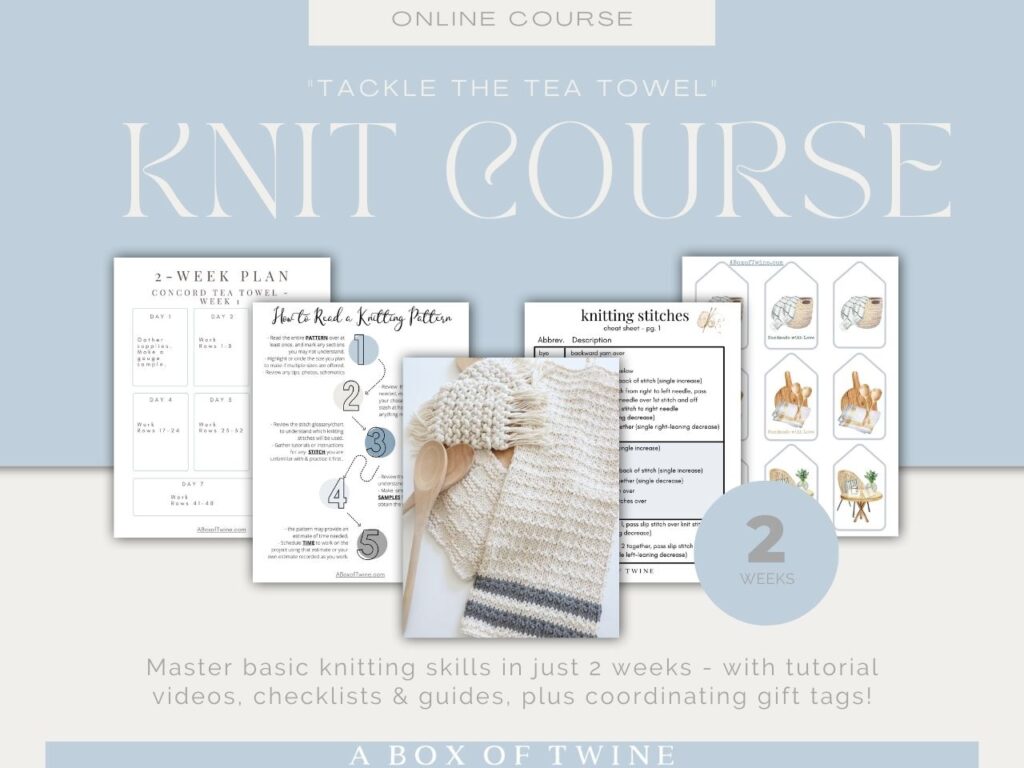
——————————————————————————————————————–
I hope this list of essential tools for beginner knitters was useful to you, especially if you are just starting out. Take it one stitch, one project at a time, and you will gain confidence in your knitting abilities.
You may become addicted to this wonderful yarn hobby! Can you think of any other supplies every knitter must have? Let me know in the comments.
===> Remember to PIN for later! <===
